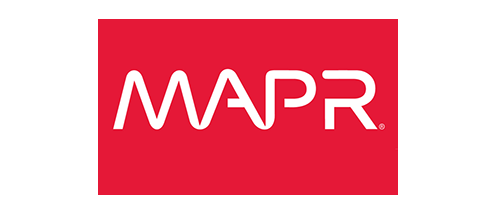MapR diversifies to cloud storage market


In the Hadoop world, we've noted that MapR has always marched to a different drummer. Its core file system is the building block for its Converged Platform, where you can squash the Lambda architecture, running batch, interactive, and real-time on the same cluster. Putting IoT money where its mouth its, MapR also recently added edge processing to extend the footprint of its converged platform.
But MapR doesn't want you to think of it as solely a Hadoop platform. Big on Data bro Andrew Brust previously reported on MapR getting container religion, and then hawking its file system to SAP for providing low-cost cloud storage. Cue the drum roll: that sets the stage for today's announcement that MapR is rebranding its file system to MapR-XD.
MapR-XD extends on the core NFS/Posix-compliant interface of MapR-FS by adding a new object interface to Amazon S3 cloud storage. The target use case is classic data tiering, but extended to the cloud, In this case, colder data is moved to S3 but is managed as a logical single view from MapR-XD. Specifically, the file system metadata remains the same, as are security policies.
The new S3 support from MapR-XD is a response to more tightly interweaving S3 into the online system. Traditionally, S3 was the place where cloud data was stored, but when it was consumed by managed Hadoop services such as Amazon EMR, it was marshaled into its own file system. Amazon on its own has been exposing S3 data through ad hoc SQL query services like Athena, and more recently to Redshift through Spectrum.
The new XD release extends tiering from cool to hot data with new support for Flash storage. We expect that this will be part of a trend that will eventually add support of NVRAM, an emerging form of storage promising nearly the speed of memory with the density (and scale) of Flash.
Covering data platforms, one has to have enough knowledge about storage to be dangerous. As MapR added the option for selling its storage system a la carte, our initial thought was, why enter a mature space already dominated by household names? While MapR's file system share the same Posix-compliance as EMC, NetApp and other enterprise storage stalwarts, it is positioning its offering as a lower priced alternative taking advantage of modern, commodity scale-out hardware. Well, that makes it look a bit like EMC Isilon.
But then again, MapR is positioning this for cloud storage - it's not trying to replace on premise enterprise storage,. But then again, for truly scalable storage, object stores such as S3, Azure BLOB storage, Google Cloud Storage are the default. Incumbents like Dell EMC are also trying to home in on the action.
So MapR is trying to thread a needle. The not-yet public company has had success with its current model, recording 81% YoY revenue growth for the quarter that just concluded at the end of April. That growth has happened in a much smaller fishbowl. When it comes to cloud storage, it's going up against Goliaths whose economies of scale it will never match. MapR is aiming to deliver a scalable storage system that is cost-effective enough to justify its slight price premium compared to cloud object storage. It is doing so as the Amazons and Googles of the world are brute forcing direct access to their cloud stores to make them perform "good enough." But for MapR, tilting against windmills remains part of its core DNA as much as ever.